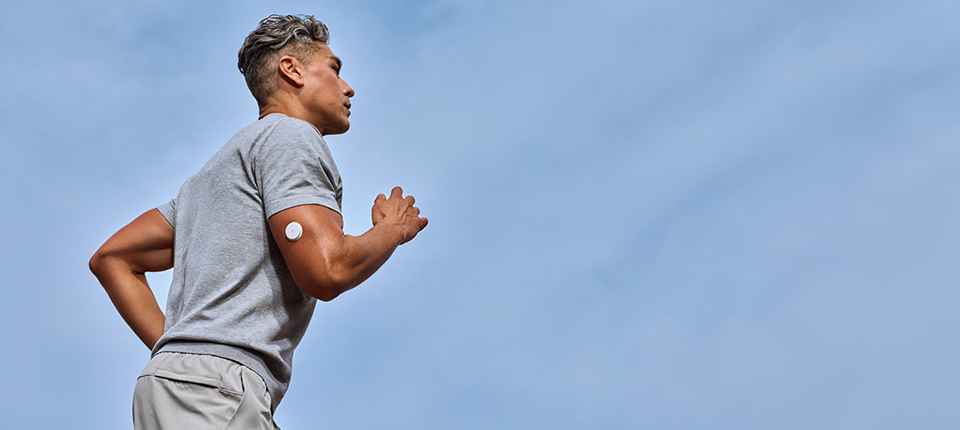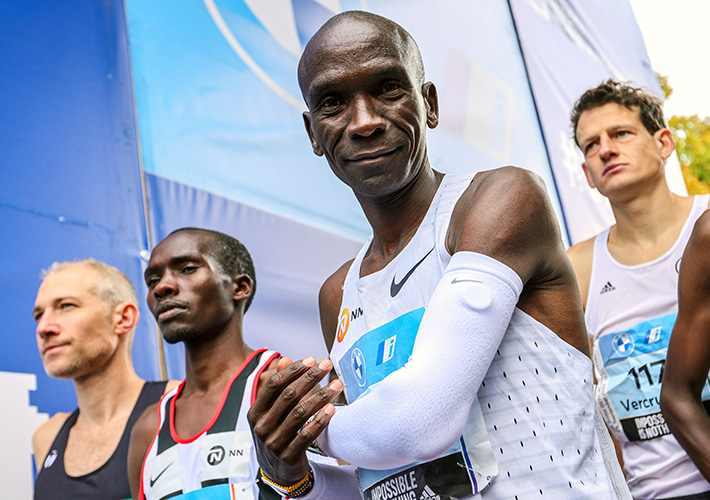More and more people, whether they’re weekend warriors or people living with diabetes, are coming to understand the impact that glucose has on their mood, sleep and health.
This growing movement is thanks in part to a relatively tiny piece of tech called a biowearable.
What is a Biowearable?
You might be familiar with health wearables in the form of watches or rings, but our biowearables go deeper, literally connecting with your body to deliver real-time insights right to your smartphone.
The insights come from the biowearable’s sensor, which measures your glucose level and relays that data every minute. Knowing where you stand helps you make healthy choices in the moment — choices that can help improve your energy, lose weight or manage your diabetes.
Athletes can draw on this information, too. Elite marathoner Eliud Kipchoge is a prime example. He was wearing an Abbott biowearable in 2022 when he finished the Berlin Marathon in 2:01:09, a world record at the time.
Pretty great, right?
The rise of biowearables started in the medical space with our FreeStyle Libre technology for people with diabetes, which is now used by about 6 million people worldwide.1 Studies of the FreeStyle Libre portfolio continue to show positive health outcomes from continuous glucose monitoring.
Now, with FDA clearance of our new Lingo biowearable designed for general consumers interested in improving their overall health and wellness, and our Libre Rio biowearable designed for people with Type 2 diabetes who do not use insulin, there are even more ways to access this life-changing technology.
How Do Biowearables Work?
Biowearables have two main components:
- The biosensor that measures data. A tiny, flexible filament (the width of three human hairs) on the back of the biosensor is inserted painlessly below the skin’s surface and collects information from interstitial fluid found in the space between cells.
- A smartphone app that receives that data and turns it into information you can act on. For example, it might alert you to a dangerously low glucose level or let you know where your glucose level is trending toward so you can be proactive about it.

